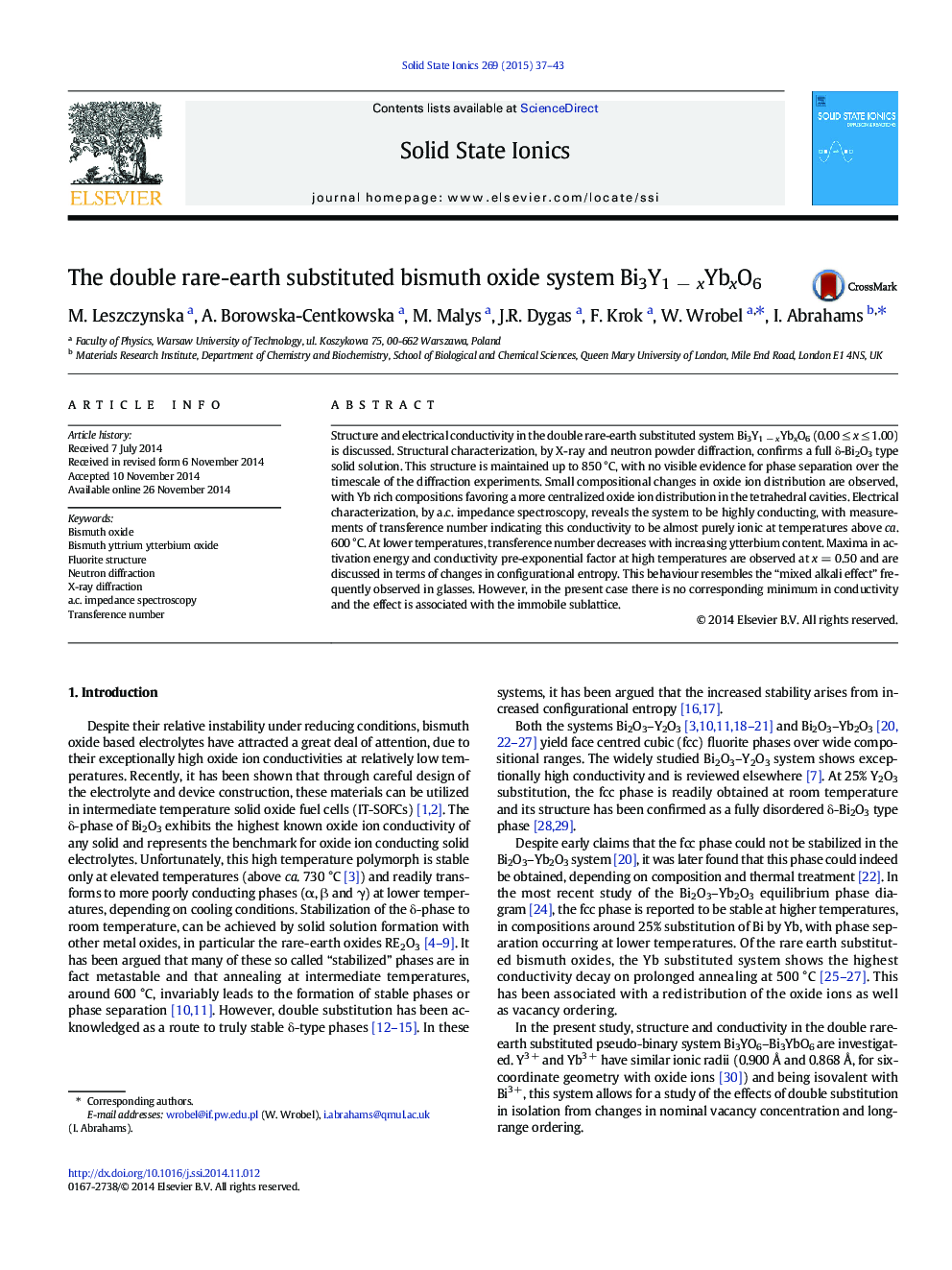| Article ID | Journal | Published Year | Pages | File Type |
|---|---|---|---|---|
| 1296374 | Solid State Ionics | 2015 | 7 Pages |
•Bi3Y1 − xYbxO6 system shows pure ionic conductivity above 600 °C.•Maxima in high temperature activation energy and pre-exponential factor at x = 0.50•Yb substitution favors centralized oxide ion distribution in tetrahedral cavities.
Structure and electrical conductivity in the double rare-earth substituted system Bi3Y1 − xYbxO6 (0.00 ≤ x ≤ 1.00) is discussed. Structural characterization, by X-ray and neutron powder diffraction, confirms a full δ-Bi2O3 type solid solution. This structure is maintained up to 850 °C, with no visible evidence for phase separation over the timescale of the diffraction experiments. Small compositional changes in oxide ion distribution are observed, with Yb rich compositions favoring a more centralized oxide ion distribution in the tetrahedral cavities. Electrical characterization, by a.c. impedance spectroscopy, reveals the system to be highly conducting, with measurements of transference number indicating this conductivity to be almost purely ionic at temperatures above ca. 600 °C. At lower temperatures, transference number decreases with increasing ytterbium content. Maxima in activation energy and conductivity pre-exponential factor at high temperatures are observed at x = 0.50 and are discussed in terms of changes in configurational entropy. This behaviour resembles the “mixed alkali effect” frequently observed in glasses. However, in the present case there is no corresponding minimum in conductivity and the effect is associated with the immobile sublattice.
